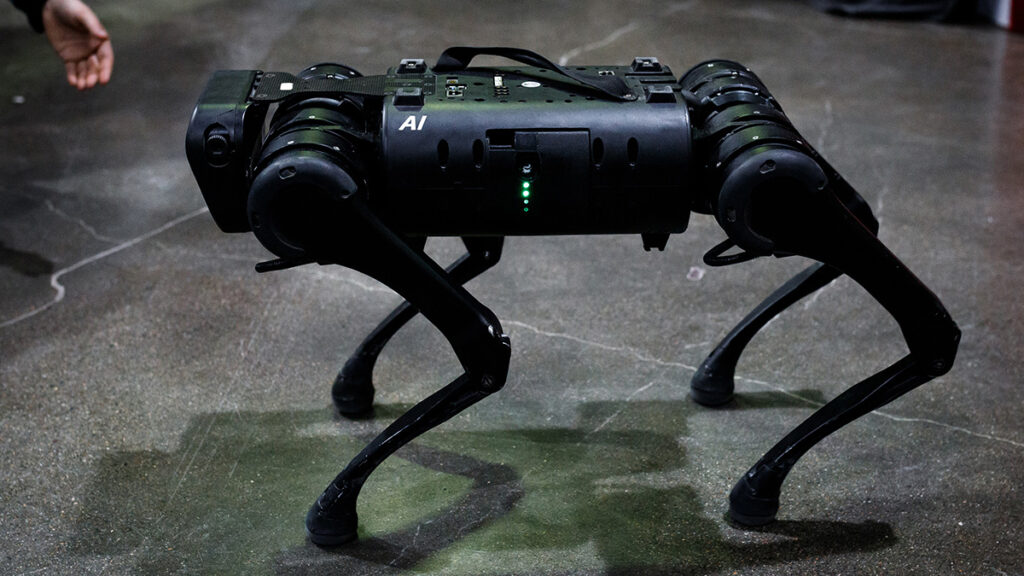As the world of robotics progresses, it may not be long until we are walking alongside them, quite literally, however before that day comes a few more trials by fire need to be conducted.
A team of researchers based at the Ohio State University have recently published their work surrounding legged robots that use limbs not far from our own as their means of mobility, allowing them to traverse environments off-limits to their wheeled counterparts. Published in the IEEE.RSJ International Conference on Intelligent Robots and Systems (IROS) 2022, the team’s work has revealed a framework of testing that can better characterise and assess the safety, capabilities, and failures seen in legged robots. These new methods are great for helping current limb-loving robots and their developers iron out their often-unpredictable nature and failure rate.
Bowen Weng, a PhD student in Electrical and Computer Engineering at Ohio State University said: “Our work reveals that these robotic systems are complex and, more importantly, anti-intuitive. It means you can’t rely on the robot’s ability to know how to react in certain situations, so the completeness of the testing becomes even more important.”
With robotics rapidly evolving to perform increasingly complex tasks, many in the industry have taken note of the looming safety hazards. To counteract this issue, many have suggested a set of ‘universal safety testing regulations,’ this being especially relevant given robotics’ growing use in industry as well as our everyday lives.
Legged robots were the particular recipient of focus, given their tendency to be made of hard metals, ability to achieve running speeds of up to 20mph, and proclivity toward failure. This combination could make them outright dangerous if they began to see use alongside humans, especially in hazardous environments.
“Testing is really about assessing risk, and our aim is to investigate how much risk robotics currently presents to users or customers while in a working condition,” said Weng.
Weng noted a severe lack of any common agreements on how to actually test legged robots in the field, with only a handful of safety specifications being currently present. The study conducted by him and his team at Ohio State aims to fix this problem, being the first data-driven, scenario-based safety testing framework of its kind for legged robots.
“Having safety and testing regulations in place is extremely important for the success of this kind of product,” says Weng. “In the future, these robots might have the chance to live with human beings side-by-side, and will most likely be collaboratively produced by multiple international parties.”
The research makes use of sample-based algorithms to calculate how robots could fail during real-world testing, even with the use of ML. This system was partly inspired by Weng’s previous work as a vehicle safety researcher at the Transportation Research Centre.
Using this complex data alongside other factors, a robot’s overall safety performance can be rated and characterised. In the study, multiple legged robots were tested to see if they would fail when navigating a brand-new environment for the first time, these results were then used to create a framework of ratings.
As an example, during one of the trials, legged robots were told to remain upright whilst being shoved from different angles. Whilst some of these robots showed similar results no matter the direction, others saw differences. One of the legged robots tested could remain upright consistently over 100 trials when shoved from the left, however, saw catastrophic failure when pushed from the right, failing almost half of the time. It is these tests that need to be conducted to ensure the safe deployment of this sort of robot into the human world.
This framework of testing, it is hoped, will eventually pave the way for certified commercial deployment of legged robots and establish benchmarks for other kinds of robotics. Weng however did go on to say that: “What we’re working towards isn’t immediate, but for researchers down the line,” suggesting that it will be some time before things like legged robots are implemented.
“We believe this data-driven approach will help create an unbiased, more efficient way to make observations of robots in the conditions of a test environment,” says Weng.
There’s also plenty of other robotics editorial at IoT Insider’s sister publication, Electronic Specifier. And you can always add to the discussion at our comments section below or on our LinkedIn page here.
